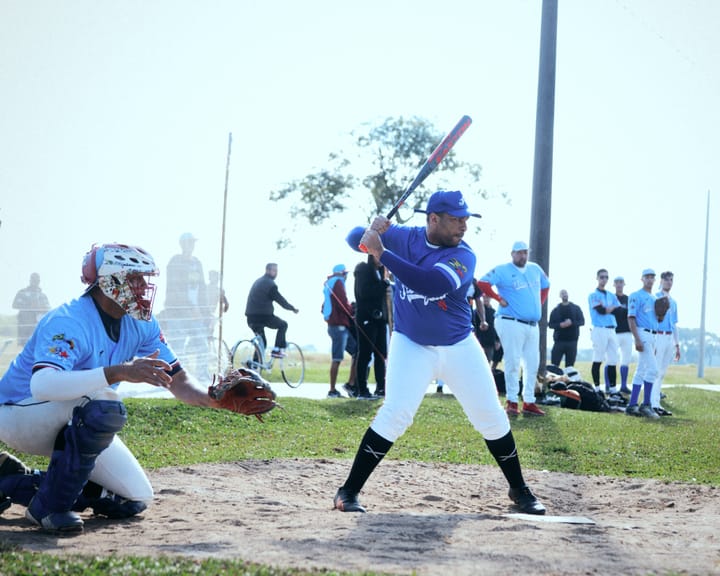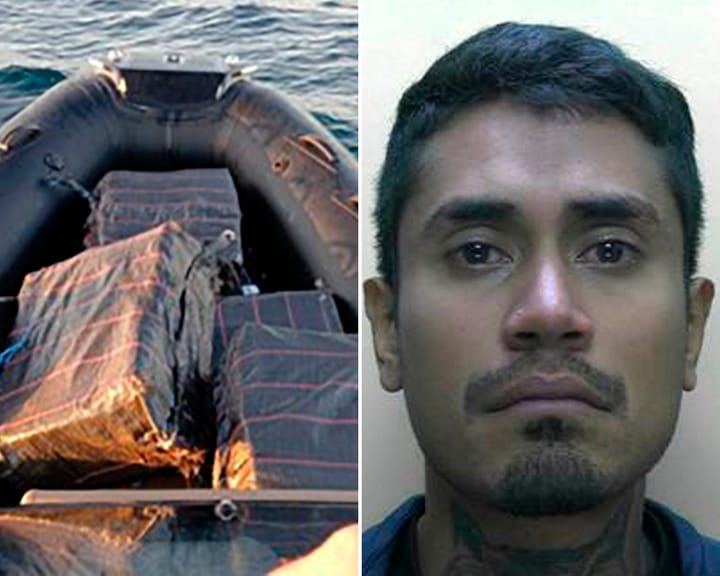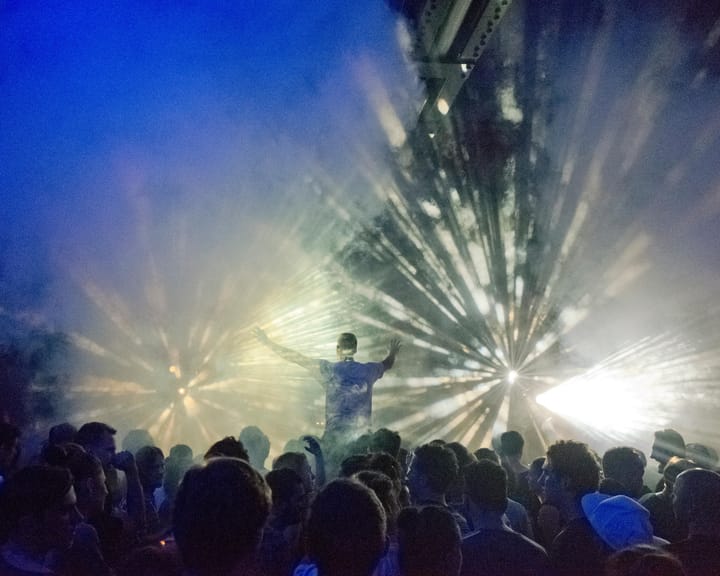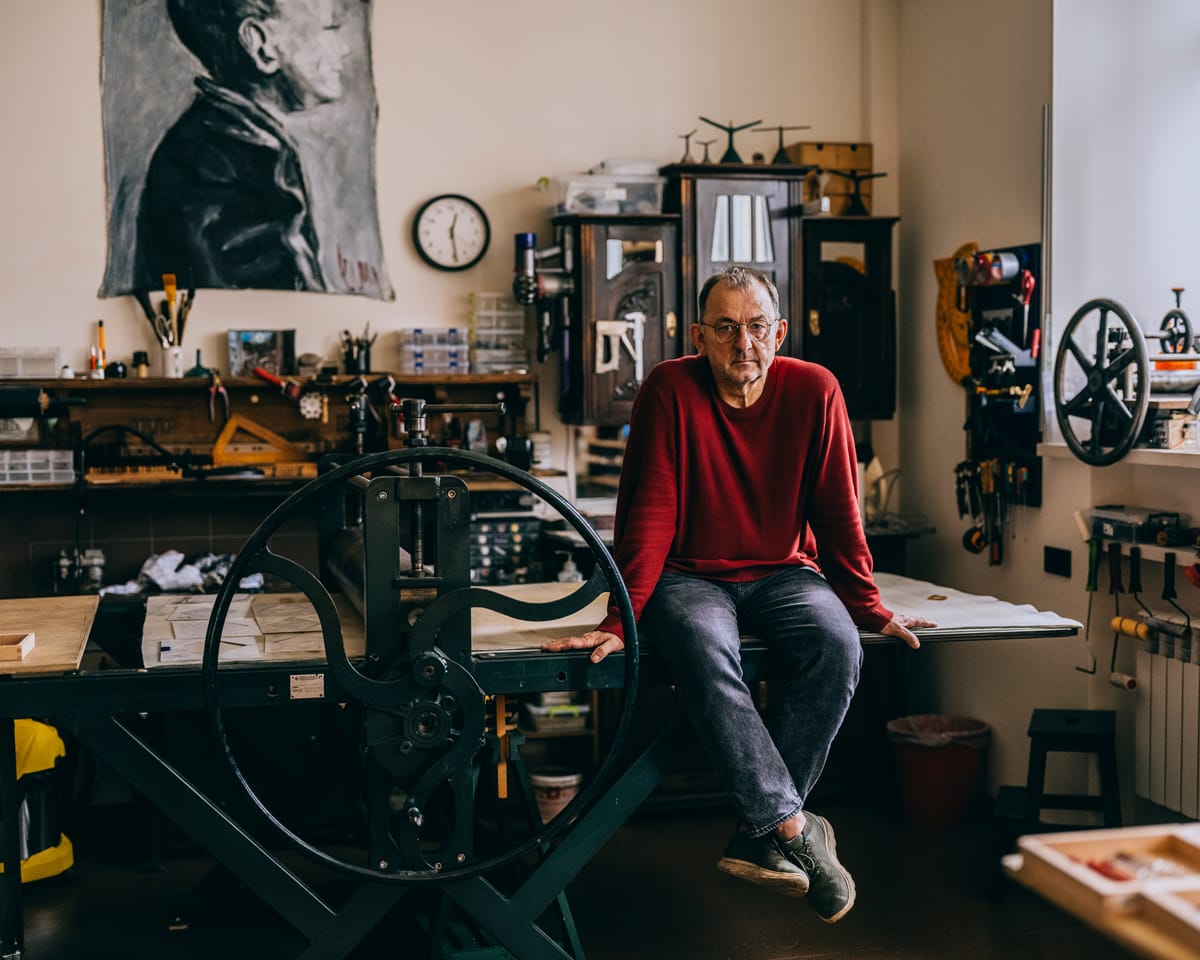While younger men must remain in Ukraine due to mobilization laws, Pavlo Makov, 66, could leave if he chose. Instead, the renowned artist—one of Ukraine's most esteemed cultural figures—continues to live in Kharkiv, his hometown.
Located just 18 miles from the Russian border, Ukraine’s second-largest city endures relentless missile strikes at night, yet revives each day as parks, cafes, and restaurants fill with those determined to stay.
Here, cultural life persists on ground floors or—better still—underground, in basement bars, theaters, and bookshops. Makov and his wife stay despite the risks. The nearest metro station, offering shelter during attacks, is 500 meters away— too far during sudden strikes. "Most bombings are so fast that by the time the alarm sounds, the explosions have already hit," he says.
They sleep with earplugs, gambling that they’ll survive another night.
Early in the 2022 war, Makov and his family fled to Italy. But like many Ukrainians, he found exile more agonizing than staying, despite the danger. "I could’ve remained, but I felt myself fading," he recalls. "After six months abroad, you lose purpose. Returning, I immediately thought, 'This is where I belong.'"
Recently, Makov renovated a new studio in Kharkiv—a ground-floor space, safer than his former fourth-floor workspace. Its small windows aren’t ideal for an artist, but they’re practical in a city where shattered glass is routine.
On his easel rests a vibrant new work in emerald and orange—a shift from his usual intricate monochrome prints and graphite drawings. It depicts a stubborn weed growing through pavement cracks. "That’s how I feel now," he says. "A little broken, but alive."
The plant, a type of plantain, grows worldwide. In Ukraine, it’s a folk remedy for wounds, its name (*podorozhnyk*) meaning "by the road"—fitting for a nation of displaced people or those facing bombardment.
"We all live out of suitcases," Makov admits, his packed rucksack always by the door.
The weed’s symbolism, he explains, is his way of addressing war indirectly.
"War’s language is too colossal—no one can rival its force. But art persists. It always has. Even in war."
Read next

"Softball booms in Brazilian city as Cuban migrants surpass Venezuelans for the first time"
Roberto Hernández Tello, 59, originally from Camagüey, Cuba, had hoped to reach the United States for a better future. But due to stricter immigration policies under the previous U.S. administration, he found himself in Curitiba, southern Brazil, thousands of miles from home.
Like him, many Cubans have recently arrived

"Public asked to aid in catching drug gangs using 'mother ships' near UK shores"
Police Ask Coastal Residents to Aid in Combating Drug Smuggling
Authorities have called on residents of coastal areas in the UK to assist in disrupting criminal groups that are employing increasingly creative tactics to bring large amounts of cocaine into the country.
Officials have noted a rise in “at-sea drop-offs”

"Germany's historic largest gay nightclub files for bankruptcy"
Germany’s longest-running and largest LGBTQ+ dance venue has filed for bankruptcy after operating for nearly 50 years, succumbing to financial pressures and shifting trends in Berlin’s nightlife.
Internal challenges and the rise of dating apps contributed to SchwuZ’s difficulties over the past year. In May, the venue

